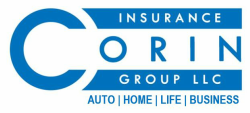 Discover the ultimate travel hack to make your summer road trips stress-free and safe. You won't believe how easy it is to get help when you need it most!
0 Comments
 First-time driver? Buckle up for our top vehicle picks that promise unmatched safety and style! Dive into our list of the safest cars for new drivers, where cutting-edge technology meets road safety. Your perfect first ride awaits—click to unveil the safest, most reliable vehicles for hitting the road with confidence. |
Contact Us(817) 688-4108 Archives
July 2024
Categories |
We are licensed in Kansas, Texas and Missouri.
Navigation |
Social Media |
Kansas Office
7500 College Blvd
5th Floor Overland Park, KS 66210 Phone: (817) 688-4108 (888) 231-7649 Click Here to Email Us |
Texas Office
550 Reserve Street
Suite 190 Southlake, TX 76092 Phone: (817) 688-4108 (888) 231-7649 Click Here to Email Us |
Missouri Office
1201 NW Briarcliff Parkway
Suite 200 Kansas City, MO 64116 Phone: (817) 688-4108 (888) 231-7649 Click Here to Email Us |
Website by InsuranceSplash









 RSS Feed
RSS Feed